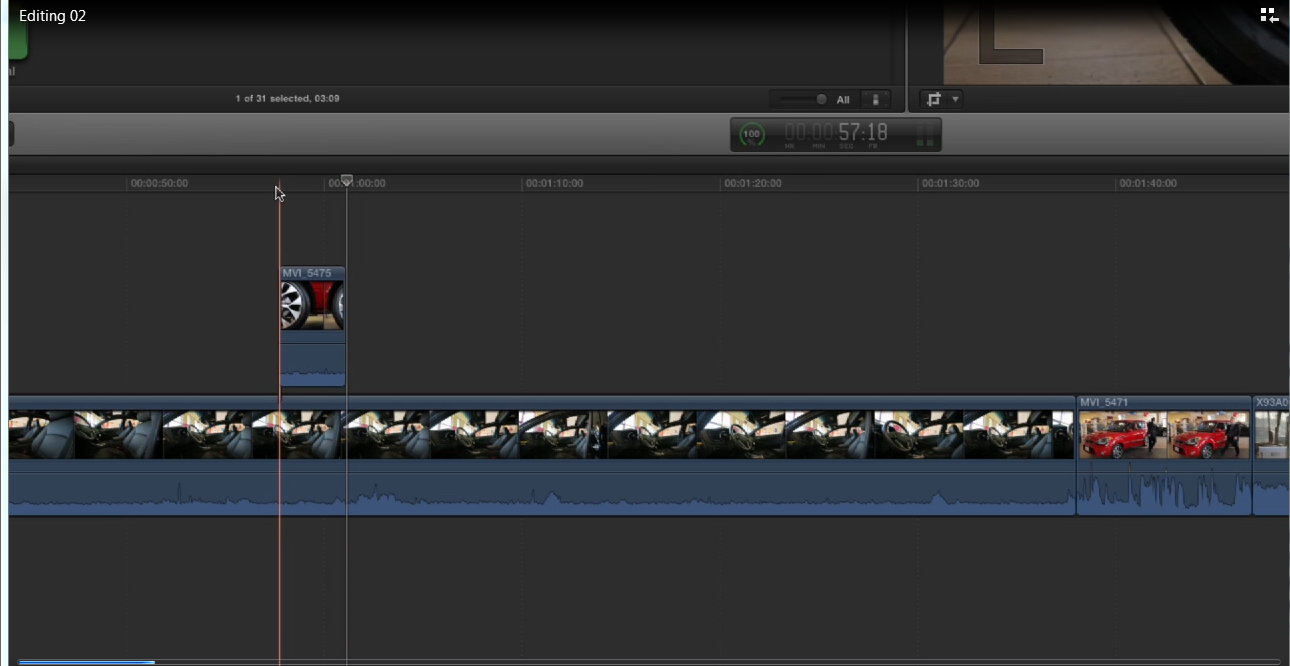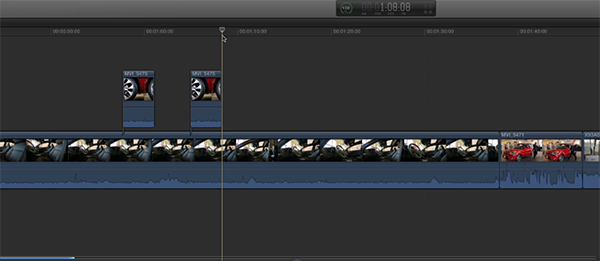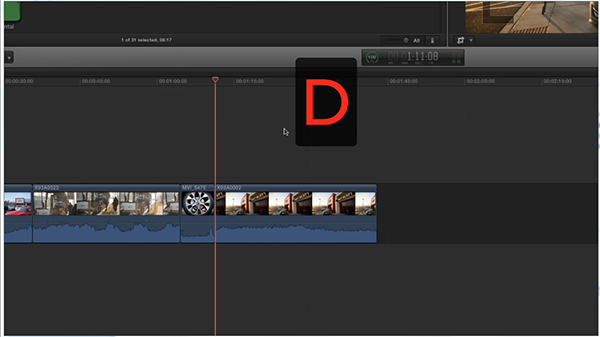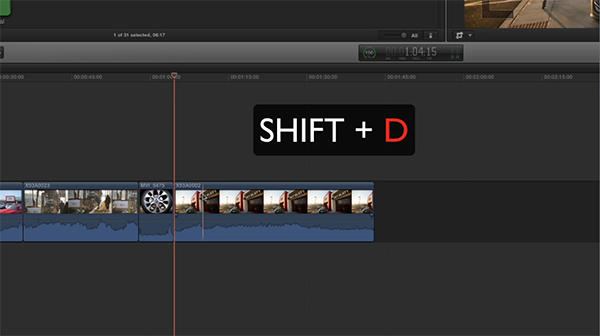Tutorial: Advanced Editing Techniques in Apple FCP X
This tutorial explores advanced editing techniques in FCP X including back-timing your edits, replacing edits and auditioning, top-and-tail editing, extend edits, trim-to-selection edits, keyboard trimming, and the Precision Editor.
In the last tutorial, we covered the four basic edits in FCP X: the append edit, overwrite edit, insert edit, and connect edit. In this one we're going to be diving a little bit deeper and go over some more advanced editing techniques that we've been using extensively at Cord3Films since switching to FCP X.
We'll be covering how to back-time your edits, replace edits and auditioning, top-and-tail editing, extend edits, keyboard trimming, and the Precision Editor.
Let's get started.
Back-Timing with the Connect Edit
First up is back-timing your edit, which is basically when you need to edit a clip into the timeline based on its Out point rather than its In point. To begin, let’s slug a bunch of clips down to the timeline to populate it.
There are two tools that allow you to back-time your edit: the connect edit (Q) and the overwrite edit (D). Now normally, when you do either of those edits, it's going to drop your selection down and start the first frame of your selection, wherever your timeline cursor is.
For example, if I make a small selection in a clip and I hit the Q key, it's going to drop the very first frame of this selection, and connect right where the timeline cursor is (Figure 1, below).

Figure 1. A typical Connect edit (Q)
Conversely, you see the reverse of that in back-timing, by holding down the Shift key when you press Q. When I do the exact same connect edit but hit Shift+Q, as you see in Figure 2 (below), FCP X back-times the edit. It drops that same selection down, but it ends it where the timeline cursor is.

Figure 2. A back-timed Connect edit (Shift+Q)
There are several times in editing where you’re going to find you need to back-time your edits, and it's a lot easier to do it this way than to drop it down and move it--you can go ahead and just hit the Shift key, and it'll end up exactly where you need it.
Back-timing with the Overwrite Edit
Another way to illustrate this is with the overwrite edit. If I move my timeline cursor in between two clips and make a small selection, I can hit the letter D on my keyboard and create an overwrite edit, which is going to take this selection and drop it right on top of this clip, as shown in Figure 3 (below). The overwrite edit started from the edit point and moved it over.

Figure 3. A typical Overwrite edit (D)
To back-time the same edit, I do the exact opposite of that: I hit Shift/D, instead of just D. Figure 4 (below) shows the same edit back-timed. FCP X inserted the clip, and it ended where the timeline cursor is.

Figure 4. A back-timed Overwrite edit (Shift+D)
Related Articles
Here's a look at two workflows for applying film grain to your footage in FCP X using cineLook (with and without Gorilla Grain), first with 4k footage shot with the Blackmagic Production Camera, and then with Cinestyle-flattened DSLR footage.
In our first tutorial on the recently released FCP 10.1, we look at the new Libraries feature, which enhances project and media organization and eases the adjustment for editors transitioning from FCP 7.
This tutorial on Apple Final Cut Pro X takes a closer look at color correction in the Inspector, exploring the Balance Color, Match Color, and Color Mask and Shape Mask features.
This tutorial on Apple Final Cut Pro X inspects the Video Inspector, a context-sensitive area of the FCP X interface that allows you to change settings of various filters and settings, and focuses on making basic but effective color adjustments.
In this video tutorial Glen Elliott of Cord3Films looks at FCP X's Timeline Index which provides innovative options for viewing, navigating, and searching your projects, including three different types of timeline markers and the ability to create a navigable To Do list of editing notes that's indispensable for collaborative workflows.
In this tutorial, Cord3Films' Glen Elliott demonstrates how to mix audio from multiple off-camera sources in a multicam edit in Apple Final Cut Pro X.
In part 2 of our series on multicam editing in Final Cut Pro X, Glen Elliott explains how you can accelerate and streamline the multicam-syncing process in Red Giant's PluralEyes 3.
Our Final Cut Pro X tutorial series continues with the first installment of a 3-part series on multicam editing in FCP X, addressing the basics like creating a multicam clip and cutting and switching audio and video using the Angle Editor.
Working with compound clips in FCP X is similar to nesting sequences in Final Cut Pro 7. Once you understand how it works, and how changes to compound clips can ripple across projects, it's a powerful feature that you'll find yourself using more and more.
In this tutorial, we'll look at several ways you can use connected storylines to enhance your FCP X edits and mix in cutaways and creative shots in a quick and efficient way.
The magnetic timeline is one of the major revolutionary changes in Apple Final Cut Pro X, and one of the areas editors struggle with when they're coming from track-based NLEs. In this tutorial we'll break it down and show you how to make it work for you.
In this first installment of our new tutorial series, Glen Elliott demystifies Final Cut Pro X, illustrates its core functions, and focuses on one of the most powerful new features for organizing, accelerating, and streamlining your edits: metadata keyword tagging.